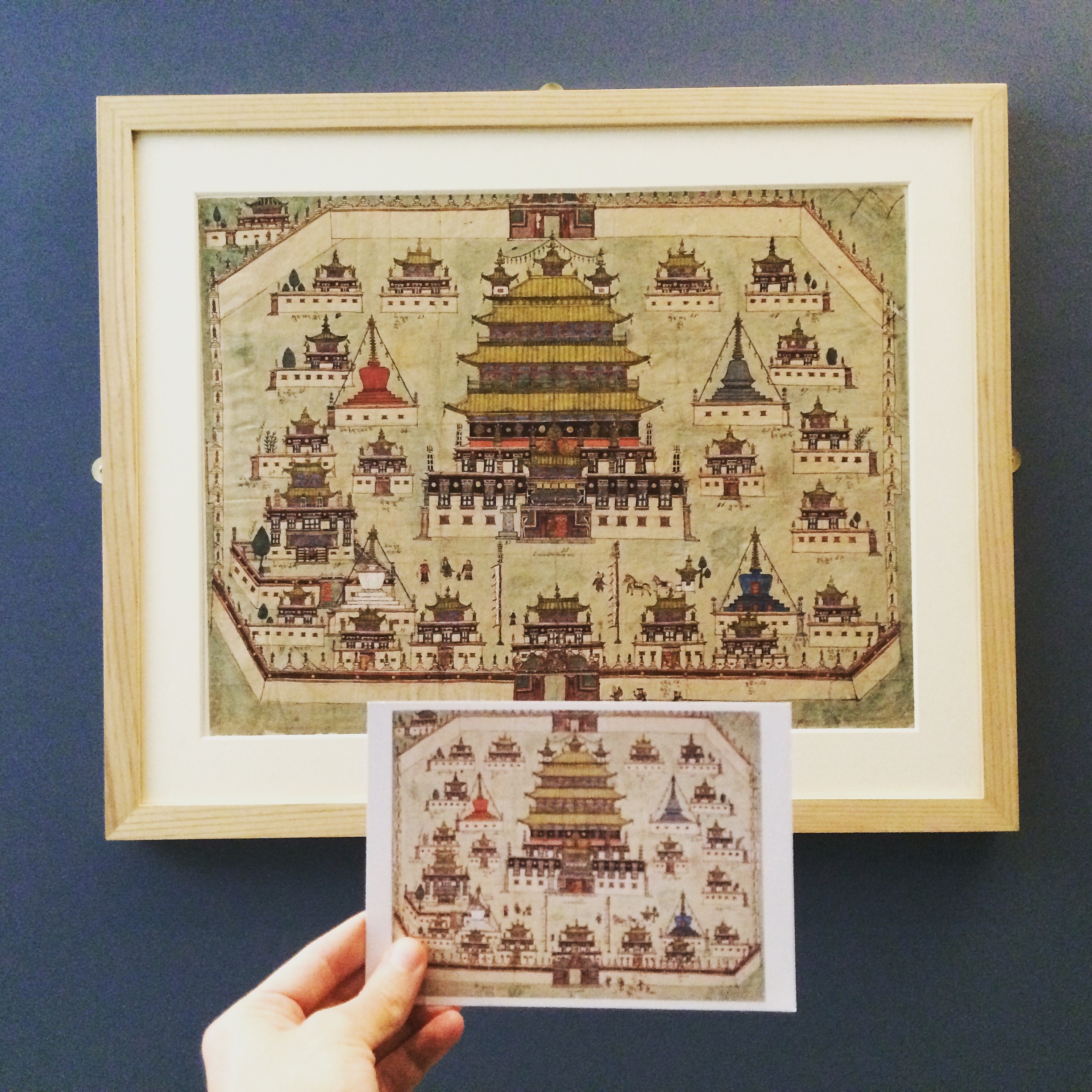
This blog entry is written by Natasha Kimmet, Curator of the Rubin Museum’s exhibition Monumental Lhasa: Fortress, Palace, Temple.
Have you visited the Statue of Liberty in New York City? Have you climbed the Eiffel Tower in Paris or strolled across the smooth marble floors of India’s Taj Mahal? Whether you have stood in front of these global landmarks or not, you are probably familiar with them because you’ve seen their images in newspapers, postcards, and online. These monuments are immediately recognizable around the world because their images are replicated and widely shared, creating opportunities for distant audiences to connect and engage with the monuments via their images.
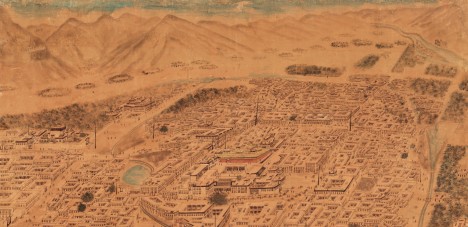
The Rubin Museum’s newest exhibition, Monumental Lhasa: Fortress, Palace, Temple, takes you to Central Tibet and the holy capital city, Lhasa, through 54 rare historical images of significant architectural landmarks. The exhibition explores how Lhasa’s landmark buildings have become iconic, familiar, and powerful through the production and transmission of architectural images.
A picture’s worth a thousand words
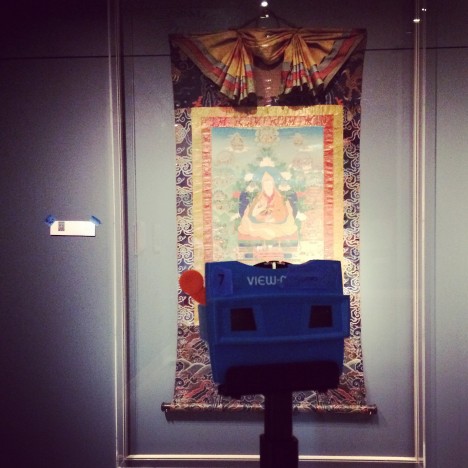
Monumental Lhasa goes beyond the buildings themselves in an attempt to understand what architectural images can show us about how people perceived, experienced, and represented Tibetan monuments. What aspects of the monument or the experience of visiting and seeing the monument are depicted in images? And what does this tell us about why the image was made?
The architectural representations in Monumental Lhasa reflect the motivations and worldviews of their makers (primarily Tibetans and Westerners) and they range in scale and scope—from photographs the size of a postcard to massive hanging scroll paintings and picture-maps Some of the images were created and collected as personal travel mementos or religious devotional objects, while others were repeatedly printed and circulated for audiences craving information about foreign places. They defy straightforward classification, blurring the boundaries between sacred and secular subjects; most of them can be described simultaneously as portraits, ritual diagrams, pictorial guides, and maps.
Depicting Tibet’s Architectural Masterpieces
Common to these images is their choice of subject matter—a group of distinct landmarks that punctuated the visual and physical landscape of Lhasa and the surrounding region.
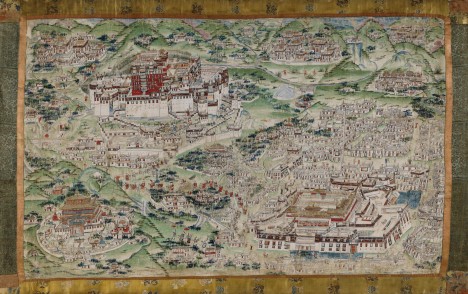
The sites include grand palace-fortresses like the Potala Palace, which is the former residence of the Dalai Lamas and seat of the Central Tibetan government; sacred temples like the Jokhang, which is Tibet’s most sacred temple built in the 7th century; secular structures like the Turquoise Bridge; and powerful monastic institutions, like the three major Geluk School monasteries near Lhasa. These sites and more are depicted in a stunning horizontal scroll painting in the collection of the Museum aan de Stroom in Antwerp that will be on view in North America for the first time.


The exhibition will highlight the close relationship between architectural images that were made of different media by diverse artists and patrons. This watercolor painting and photograph both depict the thirteen-story Potala Palace, which is commonly regarded as the pinnacle of Tibetan architecture.
Iconic Images into the Present-Day
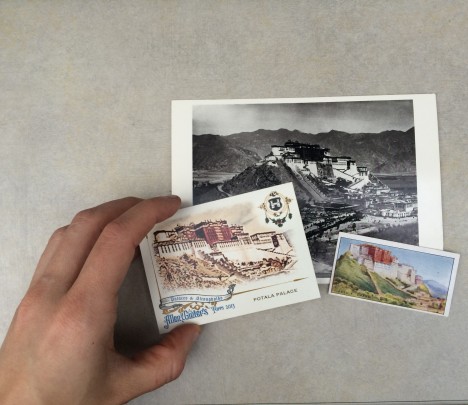
Popular images of the Potala have been distributed since the early 20th century, and can be found everywhere from collectible cards found in packages of cigarettes to a graphic mural image featured in the KFC restaurant in Lhasa—the city’s first foreign fast food chain, which opened in 2016.
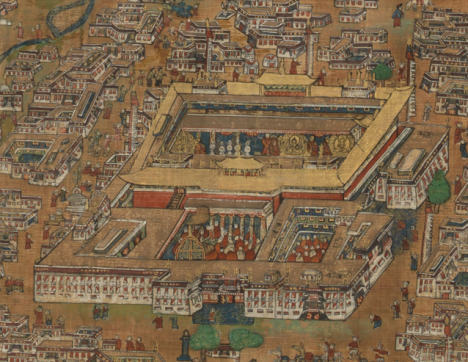
Monumental Lhasa invites visitors to explore why people copy and alter architectural images, as well as how images draw on the character and aura of the original monuments. You don’t have to understand the intricacies of Tibetan Buddhist iconography to approach and appreciate the images in this exhibition.
The scholar Peter Bishop once wrote that “˜all roads, both real and imagined, led to Lhasa.’ Today these paths—between East and West, historical and contemporary, monument and image—intersect here at the Rubin Museum.
Come traverse Tibet’s architectural landscape in Monumental Lhasa until January 9, 2017.

